Farm Supplies
COMMON GARDEN WEEDS
🌿 Got a Weed Problem? We’ve Got the Solution! 🌿Is your garden being overrun by pesky weeds? Don’t let those green monsters take over! At Red Hill Garden and Farm Supplies, we stock a wide range of effective herbicides to help you reclaim your garden paradise.
Weeds we can help you tackle
BLACKBERRIES
In Victoria, Australia, blackberries are considered a highly invasive weed, posing significant challenges to both the environment and agriculture. These robust plants thrive in a variety of conditions, quickly spreading through their extensive root systems and prolific seed production. Blackberries can form dense thickets that outcompete native vegetation, reducing biodiversity and altering habitats. Their rapid growth can also impede access to land and waterways, complicating land management and agricultural activities. Efforts to control blackberry infestations often require a combination of mechanical removal, chemical treatments, and ongoing monitoring to prevent re-establishment, highlighting the persistent nature of this invasive species.
GORSE, tREE OF HEAVEN
Gorse, a spiny evergreen shrub native to Western Europe, has become a notorious weed in regions like Melbourne, Victoria. Introduced initially for hedging and ornamental purposes, it quickly spread beyond control due to its hardy nature and prolific seed production. Gorse thrives in poor soil conditions and can form dense, impenetrable thickets that outcompete native vegetation, posing significant challenges for gardeners and farmers alike. Its ability to fix nitrogen in the soil allows it to dominate landscapes, reducing biodiversity and altering ecosystems. Moreover, gorse is highly flammable, increasing the risk of wildfires, which can devastate both natural habitats and agricultural lands. Managing gorse requires persistent effort, combining mechanical removal, chemical treatments, and ongoing monitoring to prevent its resurgence.
BRACKEN FERN
Bracken fern, while often admired for its lush, green fronds, is considered a pervasive weed in many regions, including Melbourne, Victoria. This hardy plant thrives in a variety of environments, from woodlands to open fields, and can quickly dominate landscapes if left unchecked. For gardeners and farmers, bracken fern poses a significant challenge as it competes aggressively for nutrients, light, and space, often outcompeting native plants and crops. Its extensive root system makes it difficult to eradicate, and its spores can spread easily, leading to rapid colonization. Managing bracken fern requires persistent effort, including regular cutting, careful application of herbicides, and sometimes even soil management techniques to prevent its resurgence. Understanding its invasive nature is crucial for maintaining healthy gardens and productive farmland.
ENGLISH IVY
English ivy, while often admired for its lush, evergreen foliage and ability to cover unsightly structures, poses significant challenges as an invasive weed, particularly in regions like Melbourne, Victoria. This vigorous climber can quickly dominate landscapes, outcompeting native plants for sunlight, water, and nutrients. Its dense growth can smother trees and shrubs, leading to their decline and even death. For general gardeners and farmers, managing English ivy requires vigilance, as it can spread rapidly through both seeds and vegetative means. Left unchecked, it can alter ecosystems, reduce biodiversity, and increase maintenance costs. Awareness and proactive management are crucial to prevent English ivy from becoming a pervasive problem in gardens and agricultural settings.
WANDERING DEW
Wandering Dew, also known as Tradescantia fluminensis, is a pervasive weed that poses significant challenges for gardeners and farmers in Melbourne, Victoria. This invasive species thrives in the region's climate, quickly spreading across gardens and agricultural lands, often outcompeting native plants for resources. Its dense mat-like growth can smother other vegetation, leading to reduced biodiversity and impacting the health of local ecosystems. For those tending to gardens or managing farmland, controlling Wandering Dew requires persistent effort, as it can regenerate from small stem fragments left in the soil. Effective management often involves a combination of manual removal and the careful application of herbicides, making it a time-consuming and labor-intensive task for those committed to maintaining healthy and productive landscapes.
ONION WEED
Onion weed, a persistent and invasive species, poses a significant challenge for gardeners and farmers in Melbourne, Victoria. Known for its rapid spread and resilience, this weed can quickly overtake gardens and agricultural lands, competing with native plants and crops for nutrients and space. Its ability to thrive in various soil types and conditions makes it particularly troublesome, as it can establish itself in both urban gardens and rural farmlands. Effective management requires a combination of strategies, including regular monitoring, manual removal, and, where appropriate, the use of herbicides. For gardeners and farmers alike, understanding the growth patterns and identifying onion weed early can help mitigate its impact, preserving the health and productivity of their plants and crops.
AGAPATHUS
Agapanthus, often admired for its striking blue and white blooms, has become a concern for gardeners and farmers in Melbourne, Victoria, due to its invasive nature. While it adds aesthetic value to gardens, agapanthus can quickly spread beyond intended areas, outcompeting native plants and disrupting local ecosystems. Its hardy nature allows it to thrive in various conditions, making it a persistent challenge for those managing landscapes. Gardeners and farmers need to be vigilant, regularly monitoring and controlling its growth to prevent it from becoming a dominant weed that can overshadow the diversity and health of local flora.
CAPEWEED
Capeweed, a prevalent weed in Melbourne, Victoria, poses significant challenges for both gardeners and farmers. Known for its rapid growth and resilience, capeweed can quickly dominate gardens and agricultural fields, outcompeting native plants and crops for nutrients and sunlight. This invasive species thrives in disturbed soils, making it particularly problematic in areas undergoing cultivation or landscaping. For gardeners, capeweed can disrupt the aesthetic appeal of lawns and flower beds, while for farmers, it can lead to reduced crop yields and increased management costs. Additionally, capeweed's dense foliage can alter local ecosystems, impacting biodiversity and soil health. Effective management strategies, such as regular monitoring and timely intervention, are crucial to mitigating its impact and maintaining healthy gardens and productive farmland.
DOCK
Dock, a pervasive weed found in Melbourne, Victoria, poses significant challenges for both gardeners and farmers. Known for its deep taproot system, dock can be particularly difficult to eradicate once established, often outcompeting crops and garden plants for nutrients and water. This resilient weed thrives in a variety of soil types and conditions, making it a common nuisance across the region. Effective management requires a combination of strategies, including regular monitoring, timely removal before seed set, and the use of appropriate herbicides when necessary. By staying vigilant and employing integrated weed management practices, gardeners and farmers can mitigate the impact of dock and maintain healthier, more productive landscapes.
HELIOTHROPE
Heliotrope, while often admired for its fragrant blooms, can pose a significant challenge as a weed in Melbourne, Victoria. This resilient plant tends to thrive in the region's climate, often outcompeting native flora and cultivated crops. For gardeners and farmers, heliotrope's rapid growth and ability to spread quickly can lead to reduced yields and increased maintenance efforts. Managing this invasive species requires vigilance, as it can easily establish itself in both garden beds and agricultural fields. Regular monitoring and early intervention are key strategies to prevent heliotrope from becoming a dominant presence, ensuring that desired plants have the space and resources they need to flourish.
MUSTARD WEED
Mustard weed, a prevalent invasive species in Melbourne, Victoria, poses significant challenges for both gardeners and farmers. Known for its rapid growth and ability to outcompete native plants, mustard weed can quickly dominate gardens and agricultural fields, leading to reduced biodiversity and crop yields. Its presence not only disrupts the aesthetic appeal of gardens but also impacts soil health and nutrient availability, making it a formidable adversary for those cultivating the land. Effective management and control strategies are essential to mitigate its spread, ensuring that local ecosystems and agricultural productivity are preserved. By staying vigilant and employing integrated weed management practices, gardeners and farmers can help protect their landscapes from the encroachment of this persistent weed.
PATERSONS CURSE
Paterson's Curse, also known as Echium plantagineum, is a vibrant yet troublesome weed that has become a significant concern for gardeners and farmers in Melbourne, Victoria. Recognizable by its striking purple flowers, this invasive species can quickly dominate pastures and gardens, outcompeting native plants and reducing biodiversity. For farmers, Paterson's Curse poses a particular threat as it can diminish the quality of grazing land, impacting livestock health due to its toxic properties when consumed in large quantities. Gardeners, too, find it challenging as it spreads rapidly, requiring diligent management to prevent it from overtaking cultivated areas. Addressing Paterson's Curse involves a combination of mechanical removal, chemical treatments, and ongoing monitoring to protect the health and productivity of both gardens and agricultural lands.
THISTLES
Thistles, often considered a persistent weed in Melbourne, Victoria, present a significant challenge for both gardeners and farmers. These hardy plants are known for their spiky leaves and vibrant purple flowers, which can quickly overtake gardens and agricultural fields if left unchecked. Thistles compete aggressively for nutrients, sunlight, and water, often outpacing more desirable plants and crops. This can lead to reduced yields and increased maintenance efforts. Moreover, their deep root systems make them difficult to eradicate completely, requiring consistent and strategic management. Beyond their impact on agriculture and gardening, thistles can also affect local ecosystems by displacing native flora, which in turn can disrupt habitats for local wildlife. Effective control methods, such as regular mowing, targeted herbicide application, and promoting healthy soil conditions, are essential to managing thistle populations and minimizing their ecological impact.
WILD RADISH
Wild radish weed, a prevalent nuisance in Melbourne, Victoria, poses significant challenges for both general gardeners and farmers. Known for its rapid growth and resilience, this invasive species can quickly overtake gardens and agricultural fields, competing with desired plants for nutrients, water, and sunlight. Its presence not only diminishes the aesthetic appeal of gardens but also threatens crop yields, impacting the agricultural productivity of the region. Effective management and control strategies are essential to mitigate its spread, ensuring that gardens remain beautiful and farms continue to thrive. By staying vigilant and employing integrated weed management practices, gardeners and farmers can protect their landscapes and crops from the detrimental effects of wild radish weed.
DANDELION
Dandelions, often seen as a persistent weed, pose a significant challenge for gardeners and farmers in Melbourne, Victoria. These hardy plants thrive in a variety of soil conditions and can quickly spread across lawns and fields, outcompeting desirable plants for nutrients and sunlight. Their deep taproots make them difficult to eradicate, as even a small fragment left in the soil can regenerate into a new plant. Additionally, dandelions produce a large number of seeds that are easily dispersed by the wind, facilitating rapid colonization of new areas. For gardeners and farmers aiming to maintain pristine landscapes and productive fields, managing dandelion infestations requires consistent effort and a combination of mechanical, cultural, and, if necessary, chemical control methods.
HOREHOUND
Horehound, a resilient perennial herb, has become a notable weed concern for gardeners and farmers in Melbourne, Victoria. Originally introduced for its medicinal properties, horehound has since spread aggressively across the region, thriving in the temperate climate. Its ability to adapt to various soil types and conditions makes it particularly challenging to manage. The plant's distinctive white, woolly appearance and bitter taste are deceptive, as it can quickly dominate pastures and gardens, outcompeting native flora and reducing biodiversity. For those in agriculture and horticulture, understanding horehound's growth patterns and implementing strategic control measures is essential to prevent its spread and maintain healthy ecosystems.




